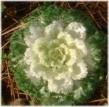Plant Profiles
Click on the first letter of the common name of the plant you wish more information about.
A | B | C | D | E | F | G | H | I | J | K | L | M | N | O | P | Q | R | S | T | U | V | W | X | Y | Z
O

Oleander
Scientific Name: Nerium oleander
Growth Habit: An evergreen rounded shrub growing to 12 feet tall and almost as wide. Leaves are lancelike and up to 10 inches long.
Light: Flowers best in full sun but tolerates light shade.
Feedings: Fertilize new plants lightly in March, June and September with a general garden product. Established plants obtain needed nutrients from decomposing mulches and nearby feedings.
Water Needs: Drought tolerant; water frequently until the roots grow into the surrounding soil. Thereafter, gets adequate moisture from rains.
Ease of Culture: Easy.
Propagation: From cuttings.
Hardiness: Hardy; stems and leaves often are damaged by severe freezes, but plants usually grow back from stems near the ground.
Major Problems: Oleander caterpillars are guaranteed. Also affected by aphids and scale insects. Control with soap or oil sprays as needed.
Pruning: Prune as needed during late winter.
Uses: Forms a natural hedge or view barrier. Single plants can be used as accents or trained to small trees. Opens clusters of red, pink or white flowers March-November. All plant portions are extremely poisonous and should be planted away from areas frequented by small children.
Florida Native: No; native to Europe and Asia.

Ornamental Cabbage
Scientific Name: Brassica oleracea
Growth Habit: A big-leaf, cool-season annual with a flattened to rounded shape growing to 12 inches tall and 18 inches wide. The leaves grow to10 inches long and 8 inches wide. The outer collar of leaves are blue-green and newer central leaves, a contrasting white, pink or purple color.
Light: Plant in a full-sun location.
Feedings: Apply a general garden fertilizer monthly.
Water Needs: Prefers a moist, well-drained soil. Grows best with water every three to four days.
Ease of Culture: Easy.
Propagation: Start plants from seed.
Hardiness: Hardy; may be damaged by sudden and severe freezes.
Major Problems: Caterpillars and slugs may chew holes in the leaves. Handpick from the plants and use natural controls as needed. Plant in well-drained soils to avoid root-rot problems.
Pruning: Older lower leaves may need trimming as they yellow.
Uses: An attractive nonflowering annual for flower beds and container gardens from late fall through early spring. Plant in clusters with a backdrop of other flowers or fill a whole bed with this unique foliage. The plants are best used in clusters of single or mixed leaf colors. Like other cabbages, the leaves are edible.
Florida Native: No; native to North Africa and Europe.